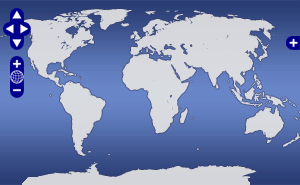A 2-dimensional P-wave velocity model (ASCII format) along the Oregon Transect (Line 1) of the Juan de Fuca Ridge-to-Trench study
This data set consists of a 2-dimensional P-wave velocity model and depth-to-reflectors from first-arrival travel-time tomography of OBS wide-angle refraction and reflection data acquired along the Oregon Transect (Line 1) of the Juan de Fuca Ridge-to-Trench study. The model is provided in both MATLAB and ASCII format with columns as defined below and within files. Here we present the ASCII files - see the associated data set for the MATLAB version of this model. The ASCII file contents are as follows. Velocity model (L1_v) in km/s for all 107 depth intervals and 2090 x nodes. L1_vmask is the same data masked to only contain velocity values in regions of good ray coverage. Depth to reflectors (L1_bathymetry, L1_basement, L1_moho) for 2090 x nodes in km below sea level. L1_z provides depths for 107 z nodes in km below seafloor. L1_x provides distance in km along the transect from its western end. L1 lat and lon are provided for 2090 x nodes in decimal degrees. L1_zero provides the lat/lon coordinates in decimal degrees of the western end of the transect. The seismic velocity model is referenced in Horning et al., 2016 and in Canales et al., 2017 and details on acquisition and processing maybe found in those papers. The data set was generated as part of the project called Evolution and Hydration of the Juan de Fuca Crust and Uppermost Mantle: A Plate-Scale Seismic Investigation from Ridge to Trench. Funding was provided through NSF awards OCE10-29305,OCE10-29411.
Canales, JuanPablo
Investigator
WHOI
Horning, Greg
Investigator
WHOI
Carbotte, Suzanne
Investigator
LDEO
Carton, Hélène
Investigator
IPGP
Nedimovic, Mladen
Investigator
Dalhousie
Device Info
Seismic:
Platform
NotApplicable
Awards
Data DOI
Quality
2
The data have been processed/modified to a level beyond that of basic quality control (e.g. final processed sonar data, photo-mosaics).
License
Data Files
References
Acquisition Information
Data Citation Information
ISO/XML Metadata
Expand

 Map View
Map View


